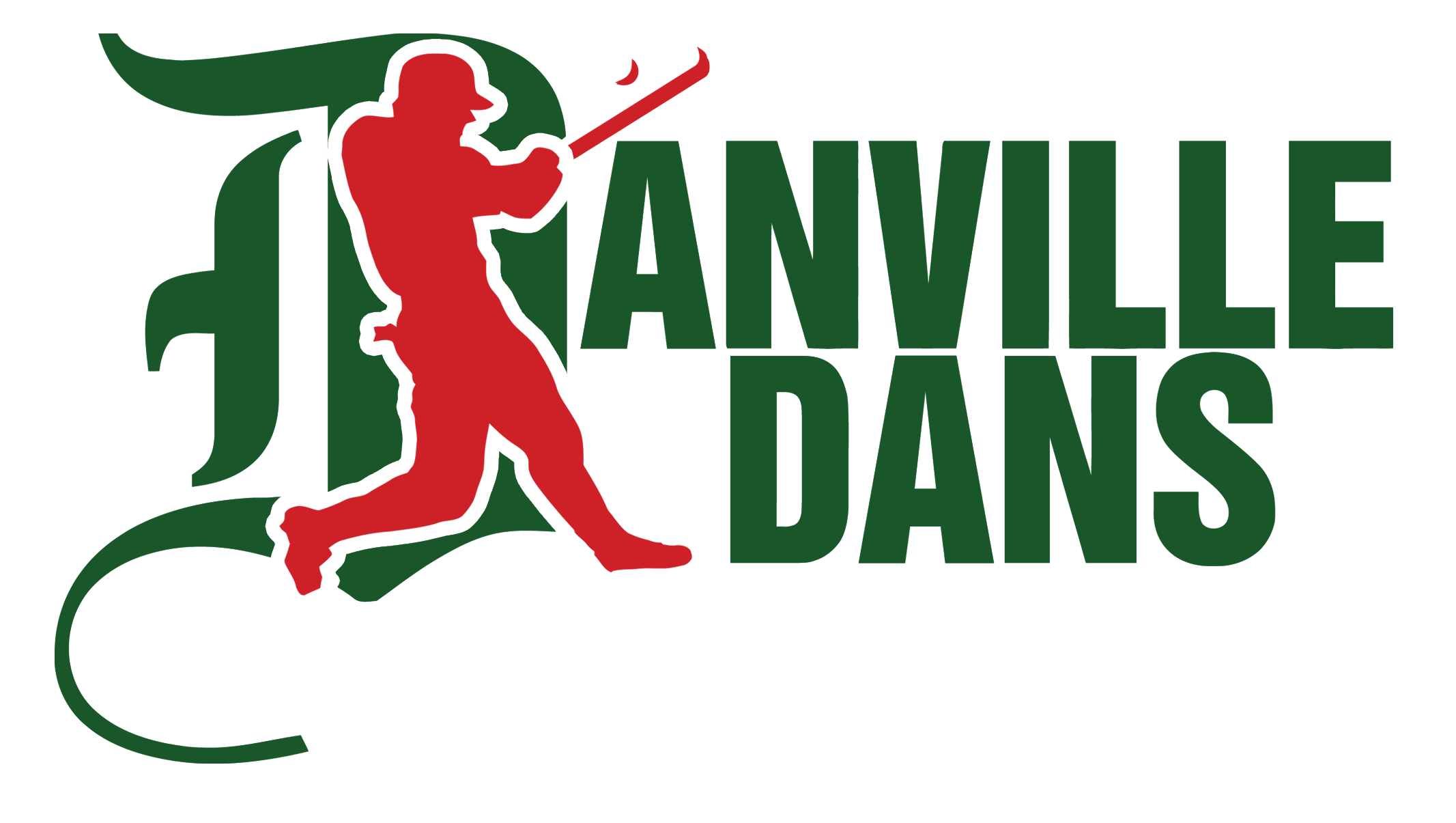DANVILLE STADIUM HISTORY
BY KATIE EHRNWALD
Everybody in life has someone or something that makes a significant impact on their lives. For the city of Danville, many would consider Danville Stadium a significant source of memories in their lives. No one reallyknows if it is the stadium that makes the people who they are or if it is the people who make the stadium what it is. All that can be known with certainty is the history. To fully understand the ambiance of the stadium it is necessary to know how it was created, the people who have been involved, the service that has been provided, the stadium’s unique qualities, problems that have arose over the years, and the tradition of excellence.
The first step in creating Danville Stadium began in the spring of 1945 when Robert Bookwalter convinced the Brooklyn Dodgers to bring a minor league team to Danville. A major step in bringing the dream of Danville Stadium to life occurred when the Three-I League accepted the Danville Dodgers into the league. Construction of the stadium began in 1945, and was completed in 1946. The funds for the building were provided by stockholders in Danville Sports, Inc. Opening Day for the stadium arrived on May 26, 1946, with the Danville Dodgers winning 2-1.
People are key for anything to work, but few realize that something as small as a baseball field could make such a difference in lives. The love of baseball brought together two hundred volunteers to help finish Danville Stadium in 1946. A young man from Danville High School suggested the name of Danville Stadium, “because it is a park for the people and by the people. . .”
The service of Danville Stadium runs beyond the players; it takes hold of the community. This park provides for the community “a serene place to watch baseball,” says Fred Kroner. The vision behind the stadium was, “just to provide for the citizens of Danville a real cheap evening of entertainment,” says Frank Roose. The park, under Roose, admitted little leaguers, church organizations, veterans, and senior citizens for free. In 1996, the stadium was host to many local teams including two high school teams,
Danville Area Community College, two American Legion teams, and the Danville Dans. The service of the field can best be stated by Tony Bleill, “From minor league teams to big league dreams, the stadium is home. A historic, nostalgic home.”
For a baseball stadium to be remembered it has to have a few unusual or unique events. The first rare occurrence happened on June 20, 1947, when Gil Hodges, Duke Snider, Jackie Robinson, and Pee Wee Reese came to Danville Stadium to play their minor league affiliate. Another unusual event occurred on October 30, 1948, when Maynard Dewitt, a record holder for stolen bases, raced a quarter mare. He ended up losing by one-tenth of a second to the horse. A rare quality anywhere is having people come together to make a nonprofit organization, but that is exactly what Murry and Kurth did in 1989, when they formed Danville Stadium, Inc. Danville Stadium, Inc. allows all teams they approve to play at Danville Stadium free.
